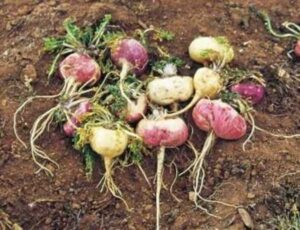The Shocking Reality of Peru’s Maca Root Industry: Can this Superfood Survive Our Insatiable Hunger for Exotic Foods?

Maca root is an incredible food. It has sustained Peruvians living high up in the Andes, where it’s one of the only foods to grow at such a high altitude, for centuries. But probably much longer than that.
A superfood in every way, revered all the way back to the days of the Inca, maca is loaded with protein and fiber. And it is also valued as an energizing aphrodisiac and fertility enhancer. Today, many Americans treasure it as a health enhancement with possible cancer-preventing benefits. It’s found in all kinds of dietary supplements, as well as in chocolates and smoothie ingredients—a mainstay in natural food stores across the country.
Maca root has also become a favorite food of the Chinese, particularly for its aphrodisiac-like effects. For tigers and rhinoceroses hunted for their parts believed to have similar libido-enhancing effects, this is good news. But for the Peruvians at the heart of the maca trade, not so much. Chinese importers are buying up as much maca as they can get, and even resorting to illegal practices. “Officials say that many Chinese buyers smuggled the root out of the country in violation of a law that requires maca to be processed in Peru before it can be exported — a measure intended to protect local businesses,” reports the New York Times. “They say seeds were also smuggled out of the country illegally, despite a ban meant to prevent the root from being grown anywhere else.”
And China has reportedly also started growing its own maca. According to the Times, that only happened with smuggled seeds, stolen from Peru.
All this pilfering with the maca plants and growers in Peru has forced the price of maca to skyrocket here in the U.S. and elsewhere. Where it was once selling for as low as $1.80 a pound, it’s now not uncommon to see it at $11 per pound, wholesale.
It’s similar to the situation we’ve seen in Bolivia with quinoa. That ancient grain has become the darling superfood of Americans ditching grains like wheat and rice. While the maca boom has been good to some of the Peruvians growing it, most of the locals can no longer afford it, just like Bolivians who have turned to cheap pasta and white bread instead of the healthy quinoa that’s now too expensive.
There are also issues with farming maca root. According to the Times, “maca rapidly depletes the soil, sucking out its nutrients, farmers typically plant a field for only two years, after which it must lay fallow for as long as 15 years. That has forced farmers to go farther and farther away to find land to plant, often tilling dizzyingly steep hillsides.”
Workers picking maca in Peru do so for incredibly low wages. And at high altitudes, the weather is cold. Picking the maca from the cold ground hurts the hands of the workers, many of whom have already taken a long, bumpy truck ride up to the fields and are given few rest breaks through the day.
Climate change is being impacted by globalization and our food choices. Where local is the foodie buzz word du jour, it’s also often complemented with exotic foods from far away. Preserving these ancient superfoods is a priority–not just for our insatiable American (or Chinese) appetite, but to protect Indigenous culture, diets and sources of income. Should the issues with maca, like quinoa and other exploited superfoods, make us think more critically about our love for exotic foods and how that impacts Indigenous communities and our planet? If this is the short-term result, what’s going to happen in another 10 or 20 years?
Find Jill on Twitter @jillettinger
Related on Organic Authority
Superfood Vegan Biscotti Recipe with Matcha and Maca
Health Benefits of Maca, the Peruvian Aphrodisiac
Image: wikimedia

